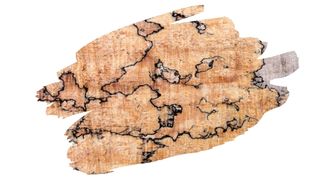Spalted wood is incredible to look at. And this unique patterning can make plain wood grain really eye-catching.
But there is a thin line between superbly spalted wood and pitifully punky wood. That’s because if you don’t halt that expanding pattern, then before too long, you’ll find yourself with a rot-riddled mess.
So, what can you do to prevent spalted lumber from falling apart? And how do you harden up punky wood?
Well, in this post, you will learn why spalting happens to wood in the first place. You’ll also discover exactly what you need to do to prevent it from spreading too far.
And we reveal which waterproofing product you can use to strengthen a rot-weakened block of spalted timber…

This post may contain affiliate links to products that we receive a commission for (at no additional cost to you). Learn more here.
Is Spalted Wood Very Weak?
Spalted wood is weak due to the fungi infesting it. Mold grows and thrives throughout that grain, creating that eye-catching pattern across the surface of wood.
But, that fungi is also eating away at the damp sections of wood, and wreaking havoc on the overall stability of that block.
If you do not stop the further spread of mold, the wood will crack and crumble. However, even if you stop further mold growth, a lot of that wood fiber may have already rotted away.
How Do You Keep Spalted Wood From Rotting?
Well, spalted wood is already rotted wood. It’s simply that, in the case of spalting, the rot hasn’t completely consumed the entire log.
Still, fungi likes to feed on soft damp timber. They don’t live and thrive on dry lumber.
So, if you can dry out spalted wood, (and get it’s moisture content down to below 20%), you can halt the spread of rot.
However, if damp untreated spalted wood is left sitting around for too long, the rot will continue to spread. And as it continues to spread, it will continue to destabilize that piece of wood.
Related Post: Rotting Wood Around Your Sink? 3 Ways To Protect That Wooden Worktop
What Does ‘Moisture Content’ Mean?
Moisture Content is a measure of the amount of water contained in a piece of wood.
Green wood, (which is a piece of wood that has just been freshly cut), has a moisture content of 100%. While pressure Treated Wood, (wood that has been infused with rot-resistant chemicals), has a moisture content of anywhere between 25% to 75%.
Related Post: How To Dry Pressure Treated Wood (Quickly And Without Warping)
Once pressure treated wood is kiln-dried, it is stamped as KDAT (Kiln-Dried After Treatment). And it is at this point that woods moisture content is at around 19% or less.
Using a wood moisture meter device, you can precisely measure how much moisture is left in that spalted wood.

General Tool’s offers an affordable yet accurate digital moisture meter in their MMD4E Digital Moisture Meter.
Not only can it be used to test moisture content levels in wood, it can also quickly measure room humidity levels too.
You can check out the latest prices for this moisture meter over on Amazon.
And How Do You Stabilize Spalted Maple Wood?
First off, if that spalted wood was already dried-through when you got it, you don’t need to stabilize it.
But, if it is still damp, then stabilizing this unique lumber is pretty easy to do. You simply need to air-dry the wood…and keep it dry.
Air-drying wood in a low-humidity space should be enough to dry it out. This process is called ‘seasoning’ wood, and it is something we do to green wood. Still, this method will also work on a piece of spalted wood too.
To air-dry that spalted lumber, make sure you keep it inside and off ground. And store it in a cool, dry space.
If you want to learn more tips and tricks on how to season wood, (as well as speed up the drying process), then check out our post over here: How To Season Wood (7 Great Tips!).
But, Stabilizing Does Not Harden Spalted Wood
Drying will stop the spread of rot. However, it won’t add density and strength back into weakened wood.
The parts that have been eaten away by rot will still be missing… even after you get that spalted timbers moisture content down.
This is why drying out spalted wood is only the first step in preparing to work with this timber. Your next step now is to fill in those missing gaps, and harden that lumber back up.
Related Post: Is A Spalted Wood Cutting Board Food Safe? | TheWoodworkPlace.com
How Do You Treat And Harden Spalted Wood?
To toughen up spalted wood, you need to saturate it with some kind of hard-wearing waterproof resin. This resin also needs to be able to sink into wood—hardening lumber both inside and out.
Which is why you should use a penetrating epoxy sealer.
Penetrating epoxy sealers are epoxy resins that have been thinned out enough to allow them to sink right down into lumber. They’re specially designed to be used on rotted wood, repairing wood by acting as a bond between all of those rotted away gaps.
Originally created to be used on sea-worn wooden boats, it can also be used to harden spalted wood pieces too.
One of the best penetrating epoxy sealers on the market is Total Boats Penetrating Epoxy Resin and Hardener. This eco-friendly sealer doesn’t give off an odor, or release lung-burning fumes.
What’s more, this epoxy sealer can be sanded, painted on, or varnished over. However, you won’t be able to apply other penetrating finishes, (such as wood stain), over it.
To Wrap Up, Here Are The 3 Key Takeaways From This Post…
- 1). Spalted wood is weakened wood, due to the spread of the fungi eating away at it.
- 2). Spalted wood can be stabilized by reducing it’s moisture content to less than 20 percent.
- 3). You can strengthen rot-weakened wood with an application of penetrating epoxy sealer.
References:
Producing Spalted Wood | Forest Products Laboratory
Controlling Moisture in Deck Lumber | Forest Products Laboratory
